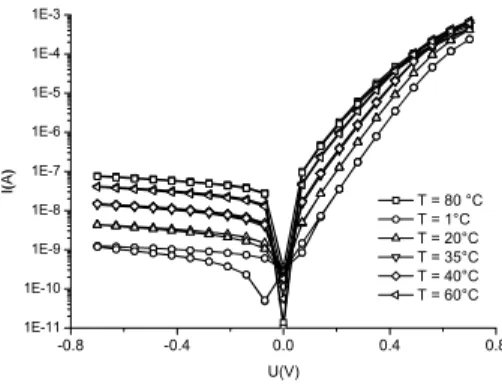Hybrid solar cells based on thin-film silicon and P3HT
Texte intégral
Figure

Documents relatifs
used. There we can see the different process conditions that lead to the production of silicon thin films where the amorphous or microcrystalline phases clearly dominate. In-between
under 418 suns for the triple junction with dilute nitride (GaInP/GaAs/GaInNAs) developped by Solar Junction [3]. Consequently a solution for epitaxy of
[5] O.Nos, “Quality control method based on photoluminescence imaging for the performance prediction of c-Si/a-Si:H heterojunction solar cells in industrial production
Possible shunt paths were mechanically removed leading to a significant increase in FF to 53% yielding a Cu 2 SnS 3 device with 2.28% efficiency, which is the highest achieved
2014 Epitaxial solar cells have been studied with the view of using rather impure upgraded metallurgical grade (UMG)-Si as a substrate material.. It is confirmed
The micromorph tandem solar cell, composed of an amorphous (a-Si:H) top cell and a microcrystalline (µc-Si:H) bottom cell, is one of the promising
[r]
The higher short-circuit currents under outdoor conditions indicate that the blue part of the clear sky spectra is enhanced leading thereby to a better performance of the